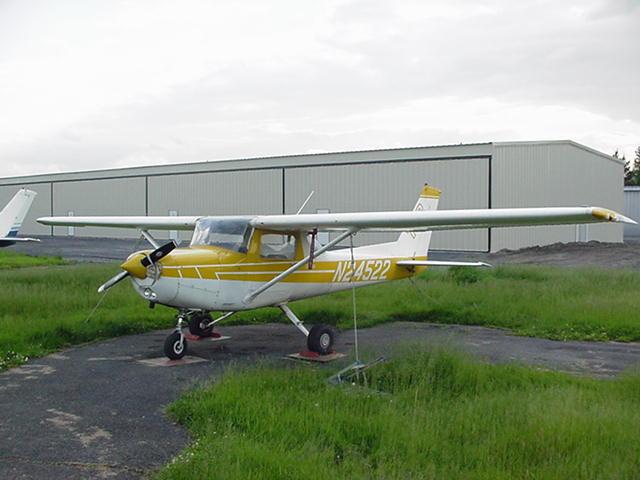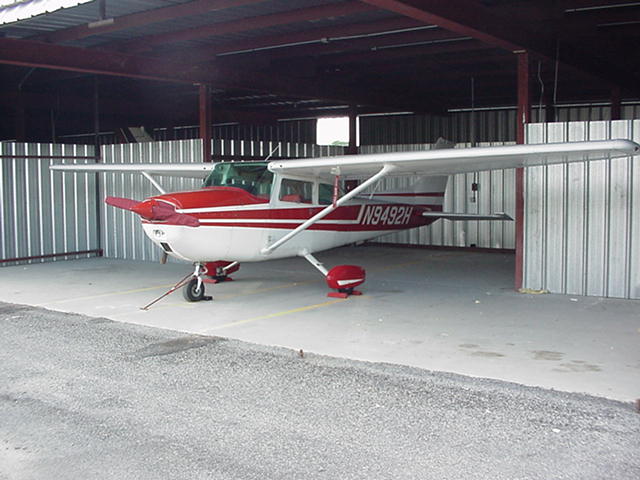Flying
|
"[Y]ou may conquer the air,
but the birds will lose their wonder,
and the clouds will smell of gasoline!" |
|
|
Henry Drummond (Spencer Tracy) |
|
|
Inherit the Wind |
|
|
The fate of our times is characterized by rationalization and intellectualization and,
above all, by the disenchantment of the world. |
|
|
Max Weber |
|
|
Science as a Vocation |
|
|
|
|
You may have picked-up that I'm a pilot (Airline Transport Pilot [ATP]) and flight instructor
(Airplane: Single & Multiengine; Instrument: Airplane [CFI: A/S&ME, I/A]). I find
the evolution from steam gauges to glass one more sad example — I think the saddest
example that I have seen — of the rationalization of the sky. Pilots are becoming
clerks at computer consoles who, experience is now teaching us, cannot hand-fly the aircraft.
O.K., the above notwithstanding, I still enjoy teaching and still recall fondly my own time
as a student at various levels. Over the years I have made notebooks full of, well, notes.
Some of these go back to the summer of 1975, when I was doing my multi, instrument, commercial,
and CFI training (actually, in that order):
the VOR and NDB notes are basically word for word out of the notebooks I wrote with my
multi/instrument/commercial/CFI
instructor (Larry Platas at OPF). Others were techniques that I learned (or discovered)
during my own time as an istructor.
I have gradually, over more years, transcribed these notebooks to e-format (still in progress).
Some of this material I have managed to get into .html format, but for some rather arcane reasons,
much of it, even simple text, is prepared in spread-sheet format,
as noted below, with multiple "worksheets" in each of the "workbook" files
(see the tabs at the bottom of the workbook display for worksheet navigation within the workbook).
While much of it is directly below, some is on the Schodack Aviation web site
(excerpted below) because it fits better there,
for example, material relating directly to the two planes; it is fairly specific to those operations so of limited interest.
To be clear, these are my notes to myself for giving flight instruction: they are not "official" or necessarily comprehensive.
Flight instruction material
- Private Pilot Flight and Ground Training curriculum
- Flight Training curriculum
- Ground Training curriculum
- Multiengine Pilot Flight and Ground Training curriculum
- Flight Training Curriculum
- Multiengine Training Drills (in PDF format) [size: 62.2 kb]
- Takeoffs: Runway Length and Climb Performance
- Instrument Pilot Flight and Ground Training curriculum
- Instrument Proficiency Check; see also,
- Excerpts from the PTS for private & commercial pilot, instrument rating, and instrument proficiency check (In MS-Excel format [Read Only]: multiple worksheets) [size: 99.328 kb]
- Regulations, Advisory Circulars, and Additional Training Materials
- Regulations from Part 61 for private & commercial pilot licenses [eligibility, knowledge, proficiency, and experience] and instrument rating (In MS-Excel format [Read Only]: multiple worksheets) [large file: 124.416 kb]
- Regulations from Part 43 for preventative maintenance & inspections (In MS-Excel format [Read Only]: multiple worksheets) [size: 40.960 kb]
- The regulations on 100-hour/annual inspections are a very good guide (within limits) to what a good preflight inspection might cover: not to take the engine apart or pull inspection plates, but there's a lot of good sense there.
- Also, many general aviation, light aircraft pilots reduce the costs associated with owning by doing their own maintenance, as permitted by the relevant regulations: here is the official story of what can and can't be done.
- Airspace Classification and Related Regulatory Information
- Airspace Classification, Communications, Mode C, Speed Limits, Oxygen, Hudson River Corridor, Niagara Falls Airspace, DC SFRA
- Flight Plan & Fuel Requirements
- Fuel, Flight Plan, IFR Alternate Airport Precautions
- Logging flight time & Logbook requirements
- Logging PIC, SIC Qualifications, Recent Experience, Definitions of "Night" and of "Cross Country," Logbook Requirements
- Key Regulations for Pilots and Flight Instructors
- Key Advisory Circulars
- Training & Flight-Test Material
- Flight Instructor Endorsements & TSA Requirements for Flight Instruction
- Additional training and operating notes:
- Aerodynamics:
- Flight Instruments:
- Navigation
- Instrument Procedures:
- Flight Instruction Odds and Ends:
Flight planning material
Links Pages
Pilots' Briefcase
The Pilots' Briefcase is a listing of files aggregated from the files on this site to keep handy in your flight bag (or on a tablet or wherever you carry your charts now) as a template for flight planning, as a reference, or as a supplement to checklist items.
Flying Odds and Ends
Ever Wonder?
The little Roman numerals on the license?
And they're not in the correct order, either!
That's because they are references to the ICAO license elements. If an FAA license were to follow the ICAO standard exactly, it would look like this:
ICAO
License Mock-up (In MS-Excel format [Read Only]) [size: 24.064 kb].
The Atmosphere
…and below
Remembering some past flying
Zahns Airport
: after Roosevelt field closed (a few years before I was born),
after Mitchell Field closed without becoming a civil airport (apparently a widely-held expectation; I remember being at the last open house there and
have 8mm home movies of it), before Republic became a major civil airport,
civil aviation on Long Island, in Nassau County, was Zahns Airport (although it was just over the county line is Suffolk County).
I learned to fly there; I taught flying there. There are now several web sites memorializing Zahns:
-
Other abandoned fields on Long Island in my logbook
:
- Riverhead Airpark,
- Grumman/Bethpage,
- Spadaro,
- Coram,
- Deer Park, and
-
 |
if you consider Queens to be part of the Island
(it's only an island if it has water around it, and there's no water separating Queens and Nassau Counties), then |
- Flushing
- As of 2012, Zahns and Deer Park are gone completely, Flushing — what is left of it — is sinking back into the marshlands,
Grumman is all but gone (the N.C.P.D. helicopters have a pad on what was the east side of the field),
but at Coram and Riverhead the runway(s) are still clearly defined and still seem usable (word is that a model aircraft club still uses Coram).
Diving
(that is, SCUBA)
Assorted odds and ends
All right, I admit that this is a bit off the beaten track for flying, but the general atmospheric tables grew out of these dive table computations, as the makeup of air is critical to divers.
One day I'll make-up a dive page for this site, but until then, mostly for myself to find things, here it is:
Dive tables
- Dive table worksheets (In MS-Excel format [interactive]: multiple worksheets) [large file: 181.248 kb]
- Dive tables (In MS-Excel format [Read Only]: multiple worksheets) [large file: 399.872 kb]
Dive Site Information and Emergency Assistance Plans
Links to various resources
Scuba Shops
More-or-less local
And for Law and Order: SVU fans,
Note that there are no links to on-line dive retailers (except for that rather odd item above).
Our local dive shops cannot survive on air-fills alone and need your business.
Even if gear is more expensive locally, you cannot order air online.
Scuba Instructors
Active locally
Dive Site Information
Two local clubs
Associations and Information


